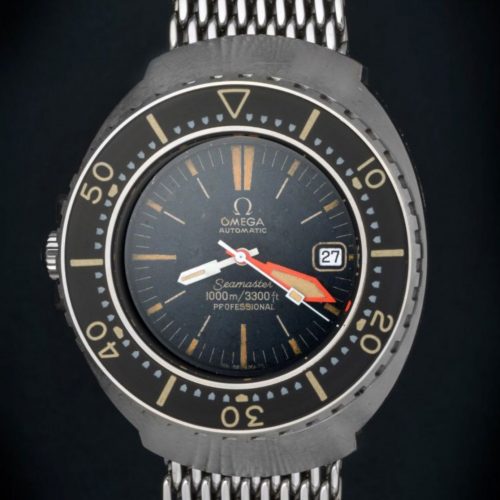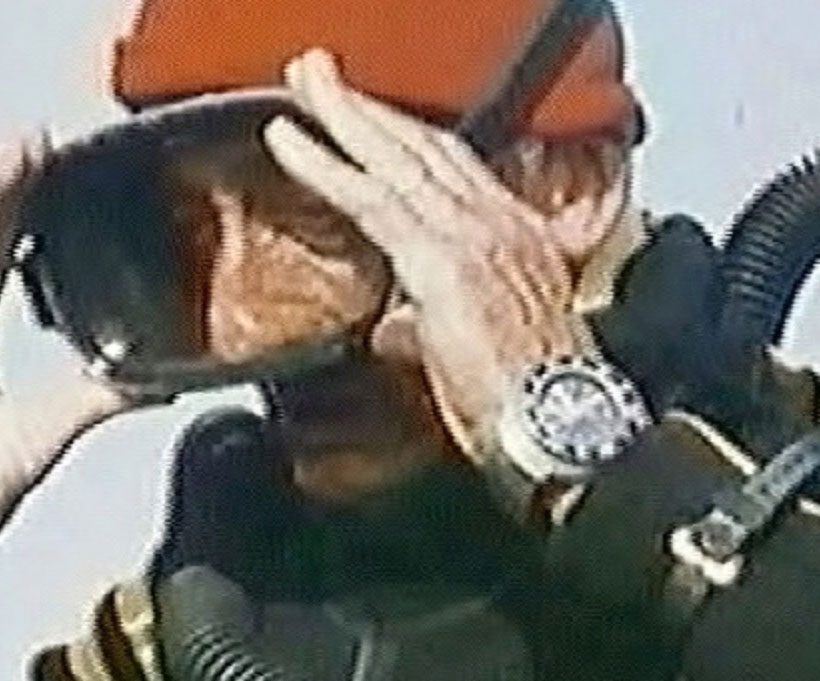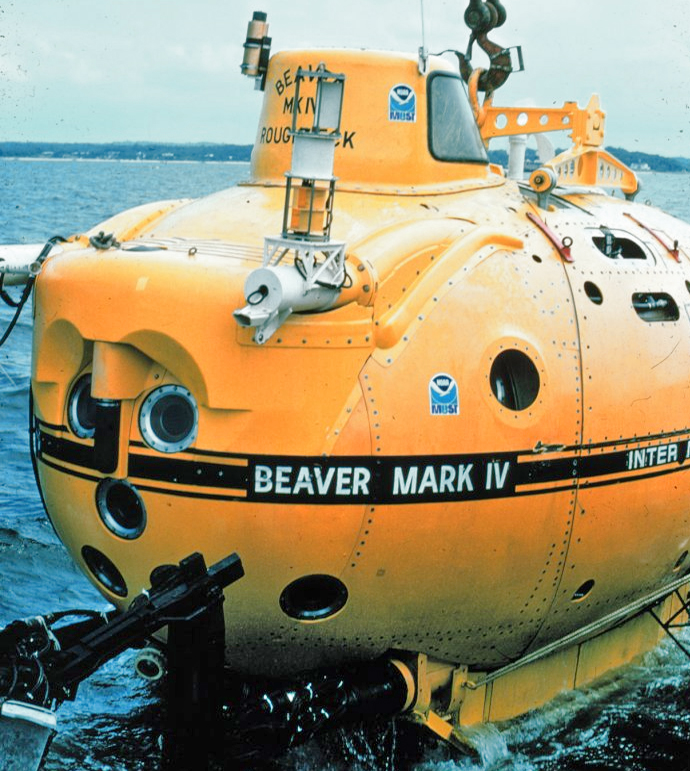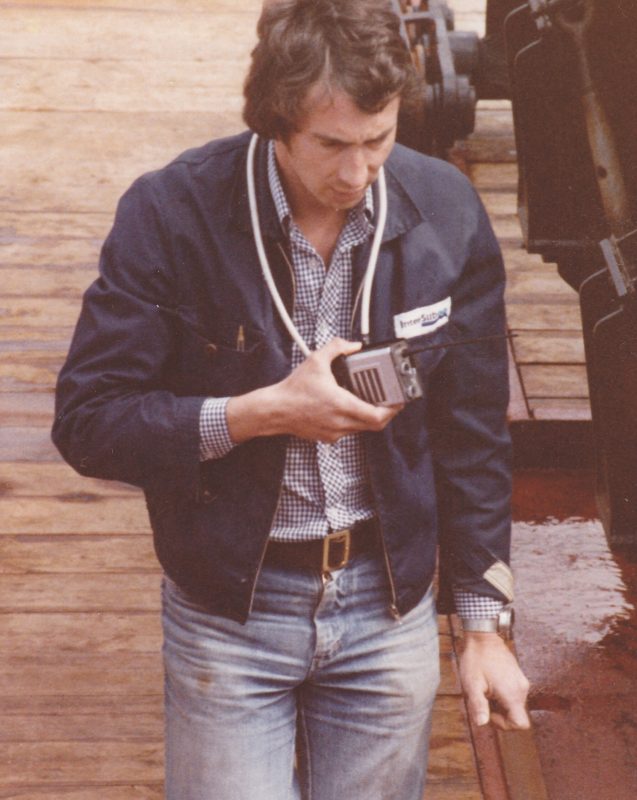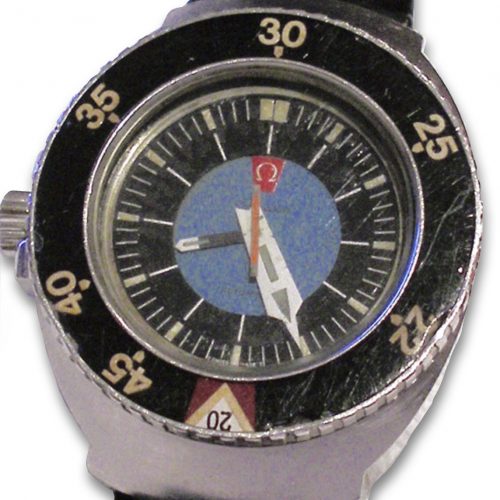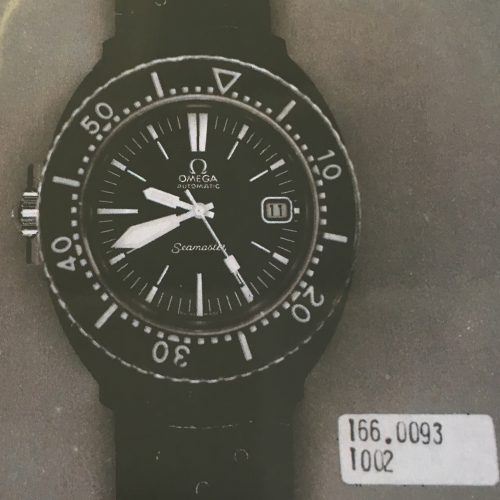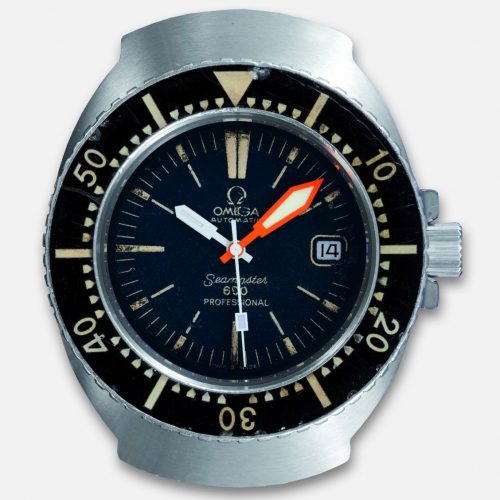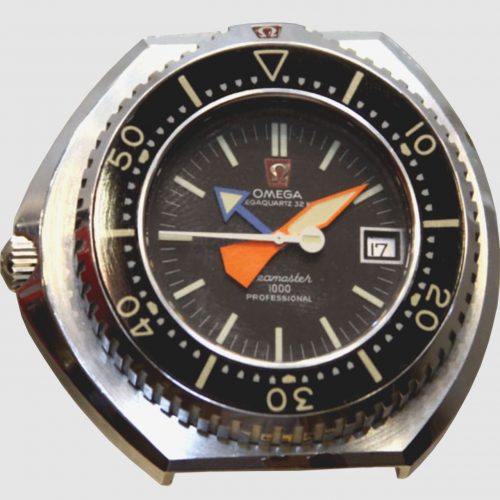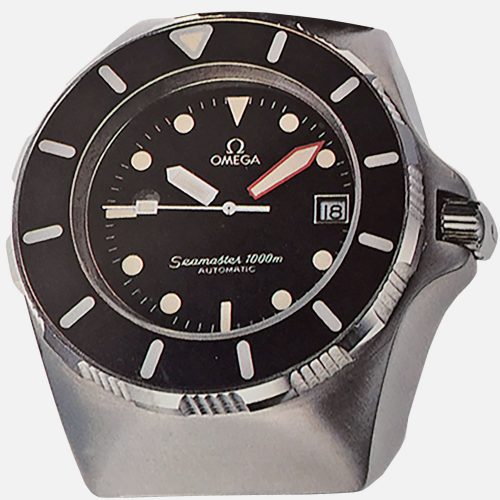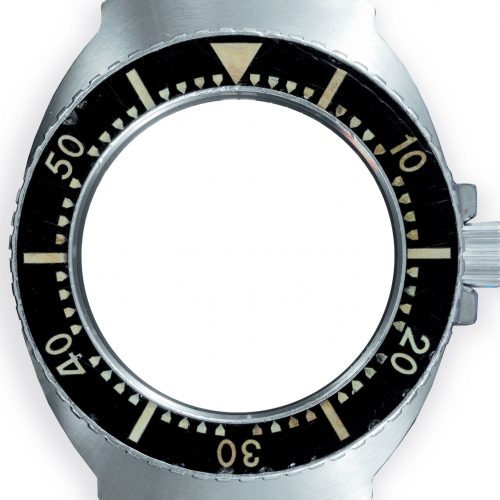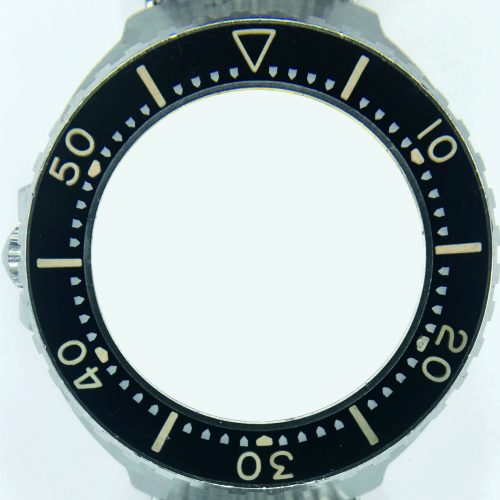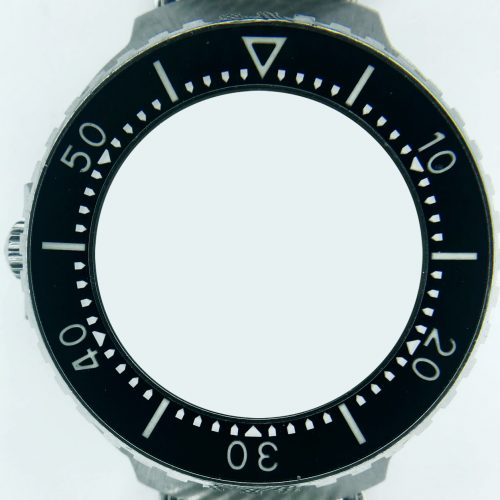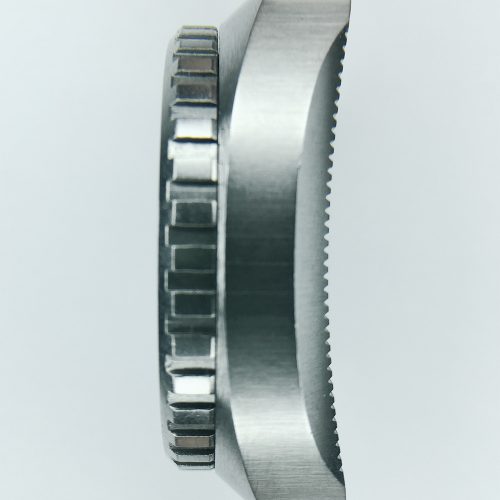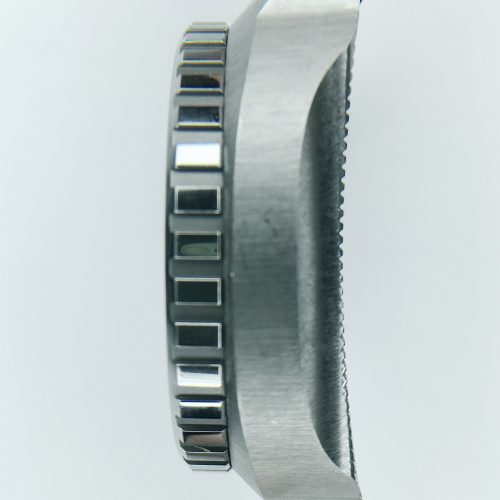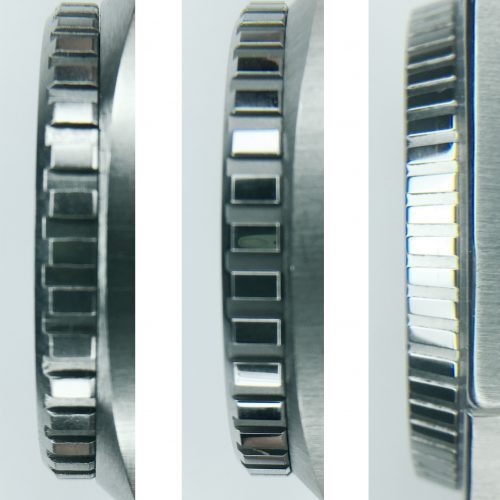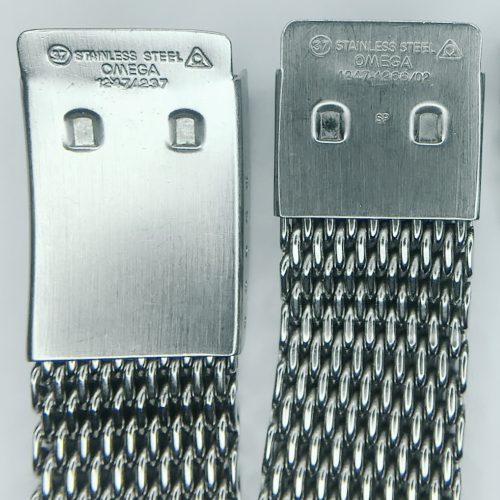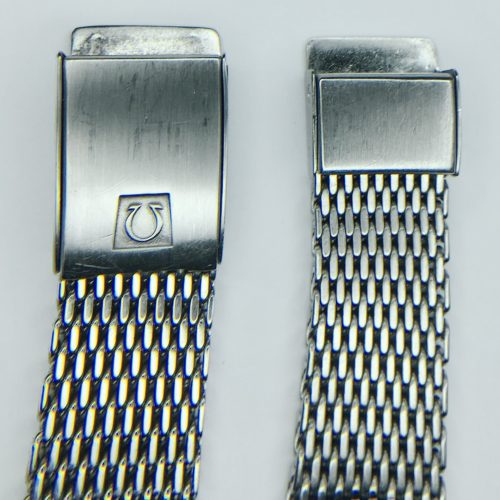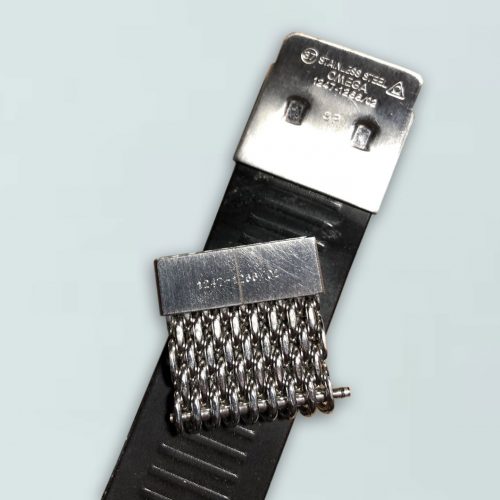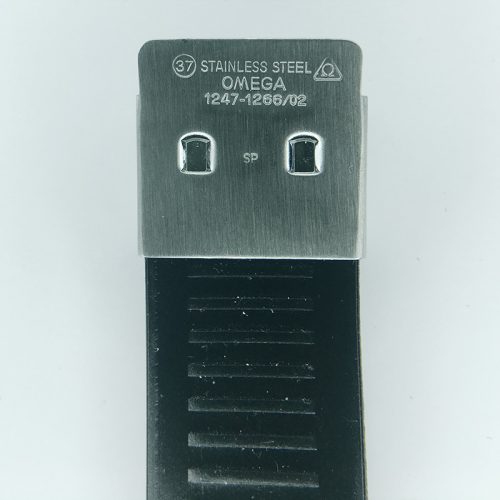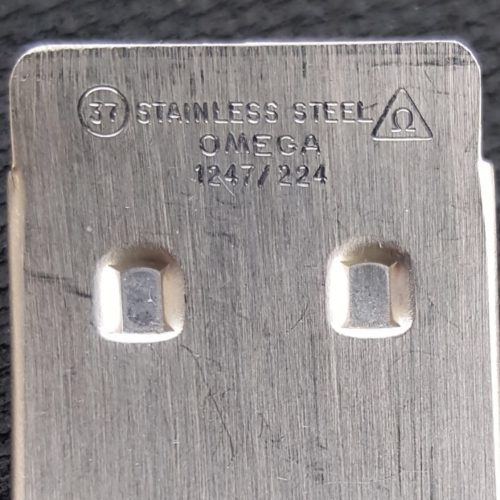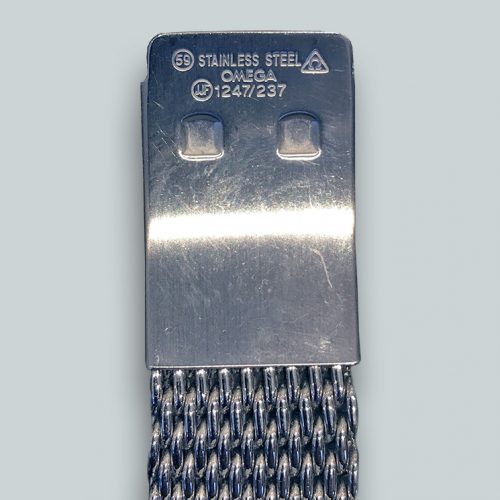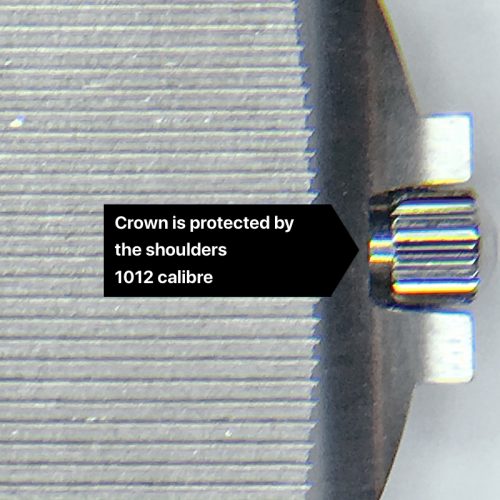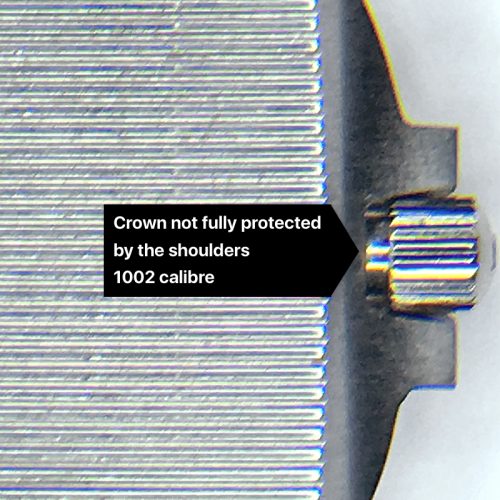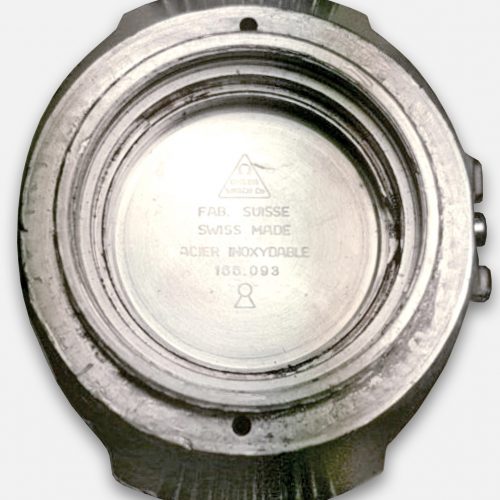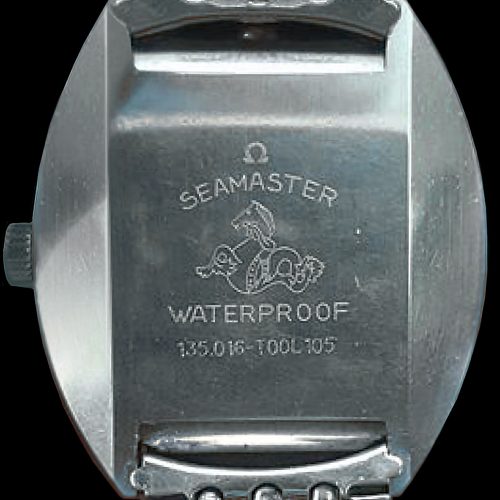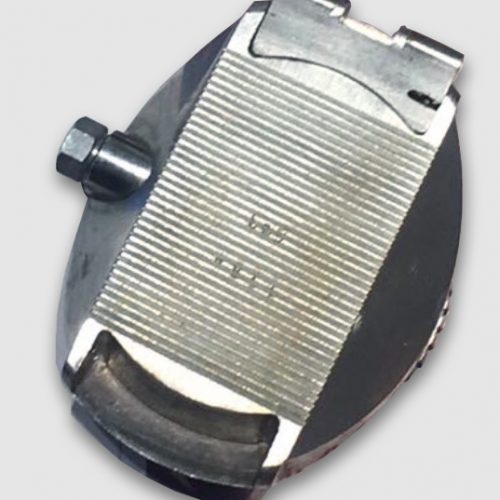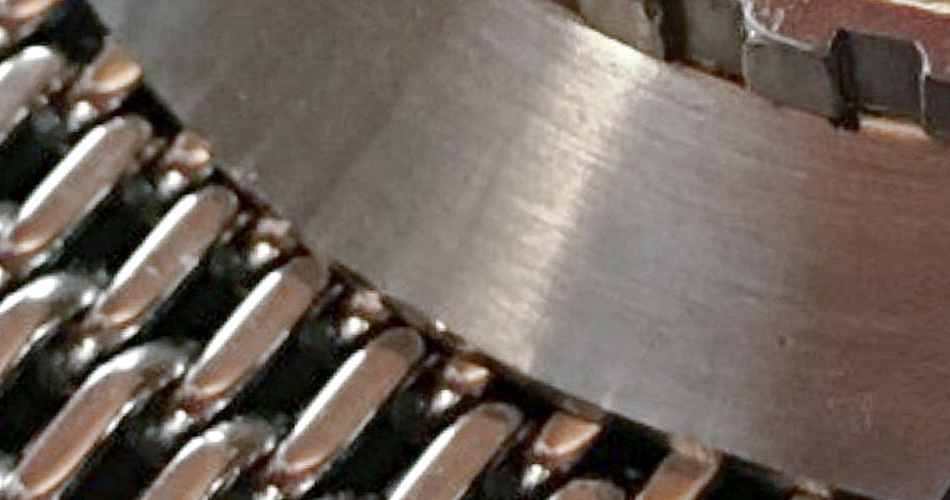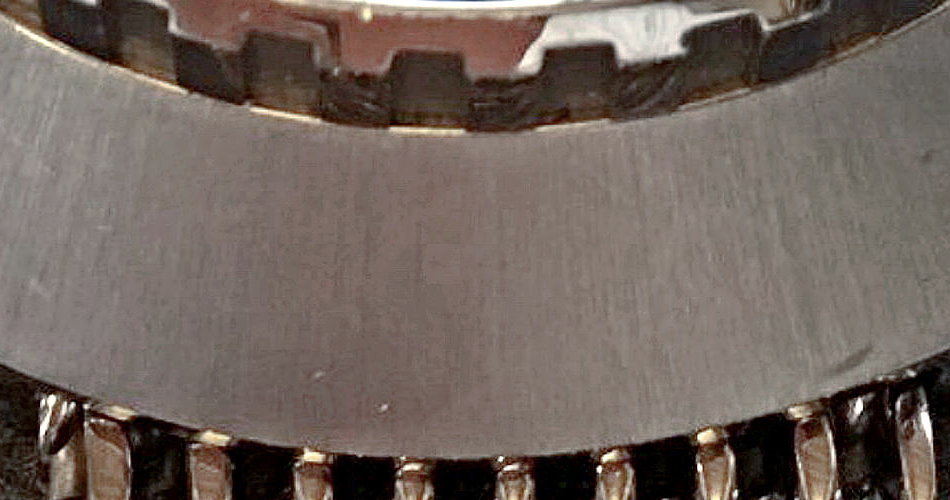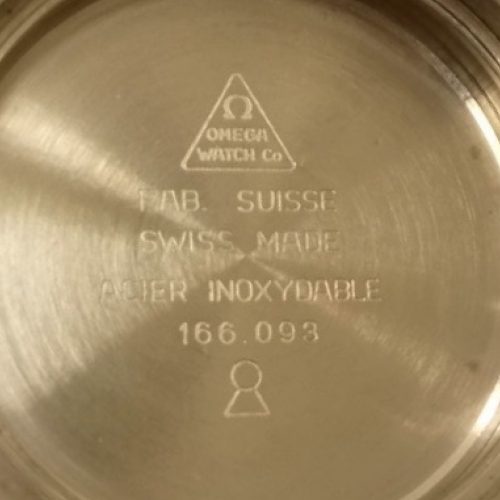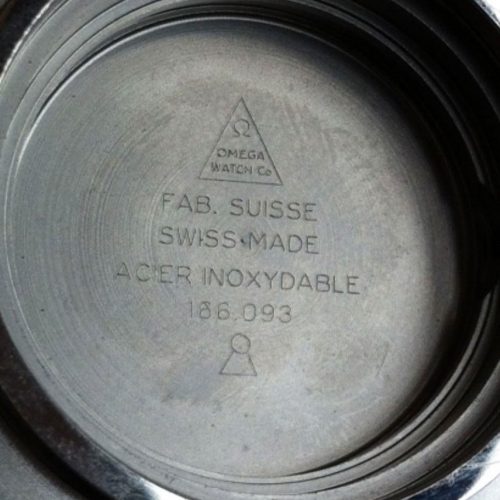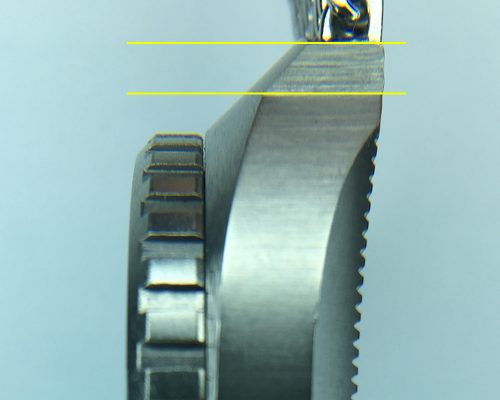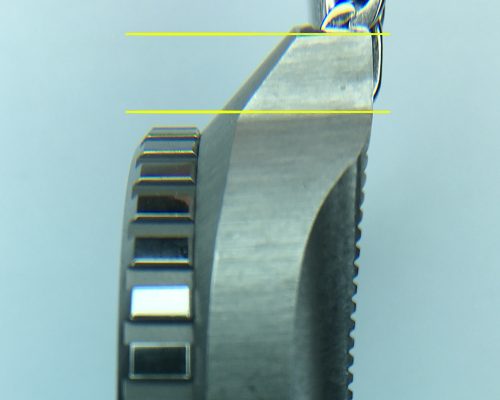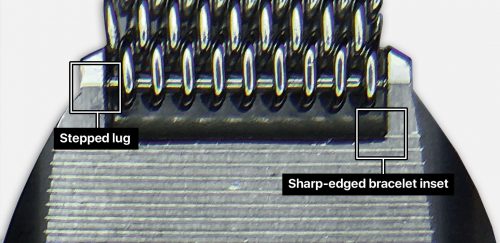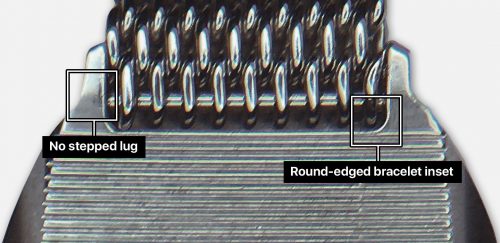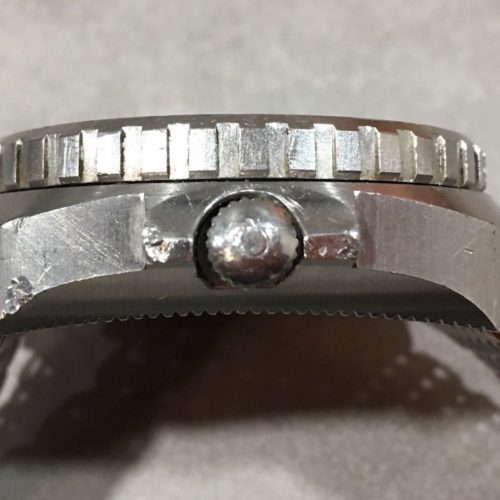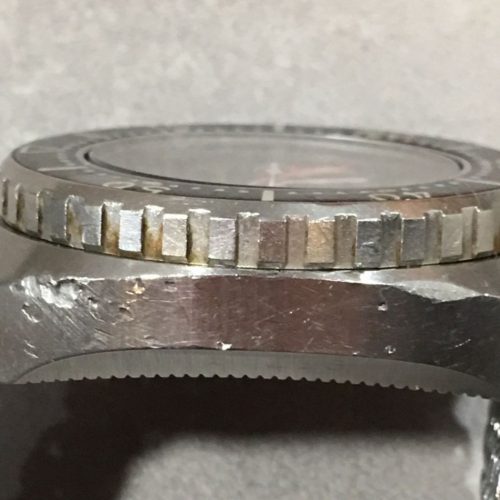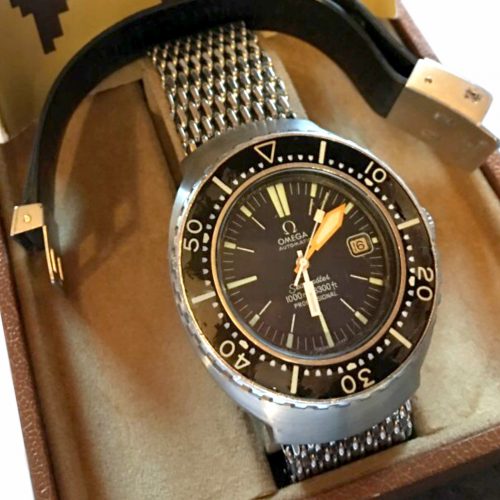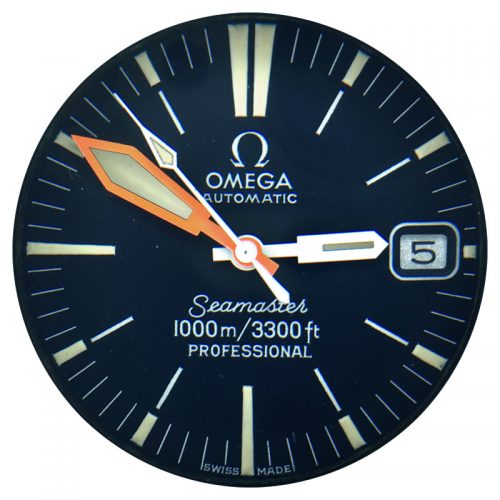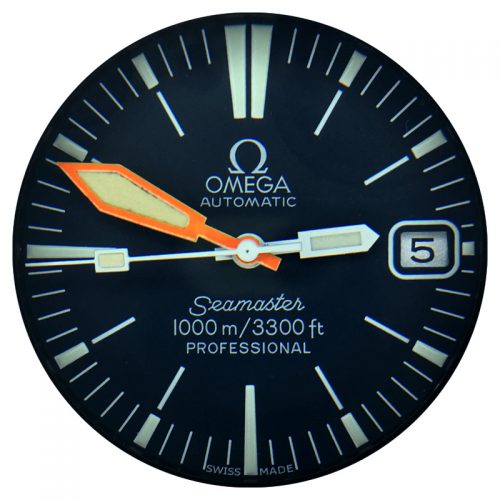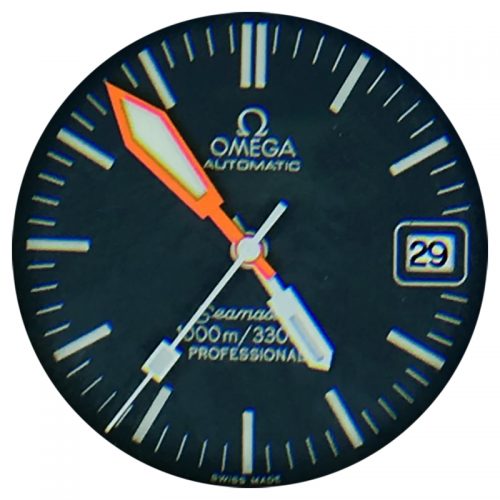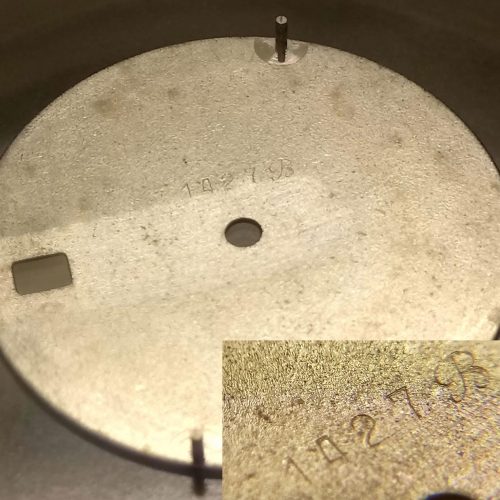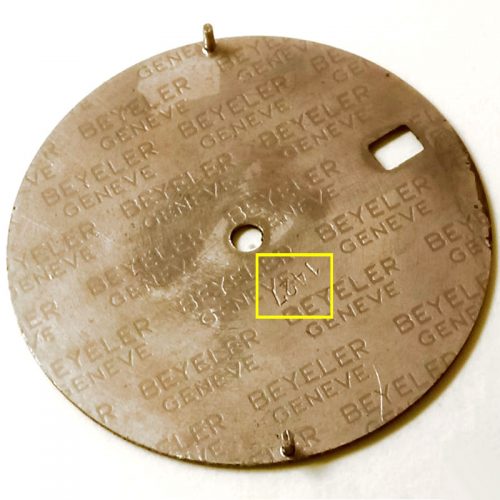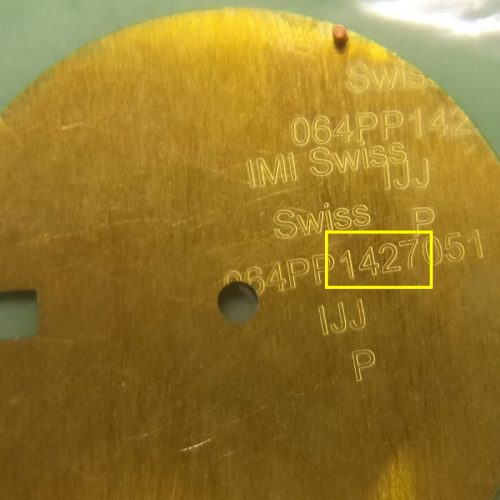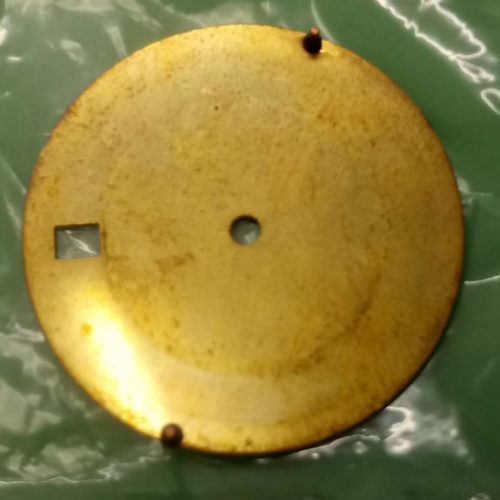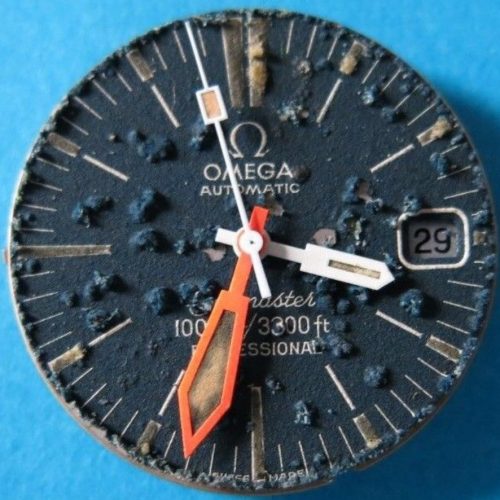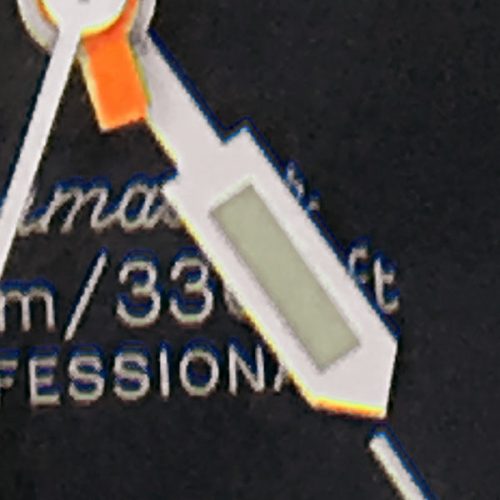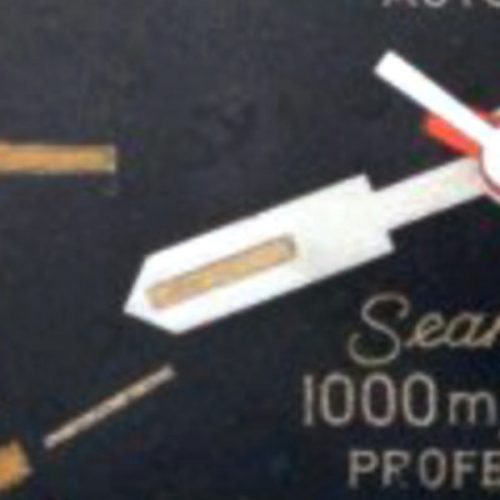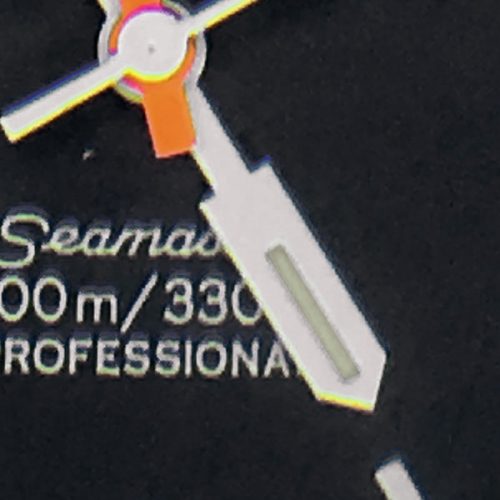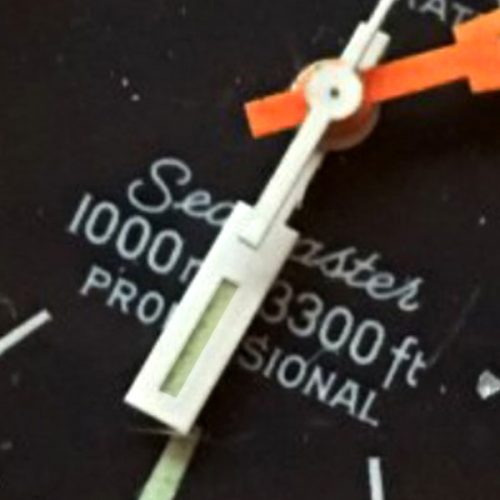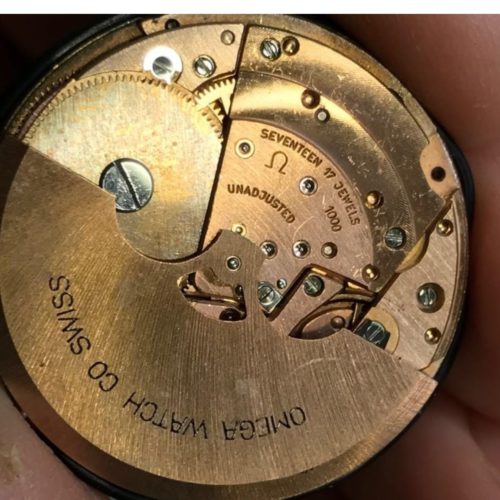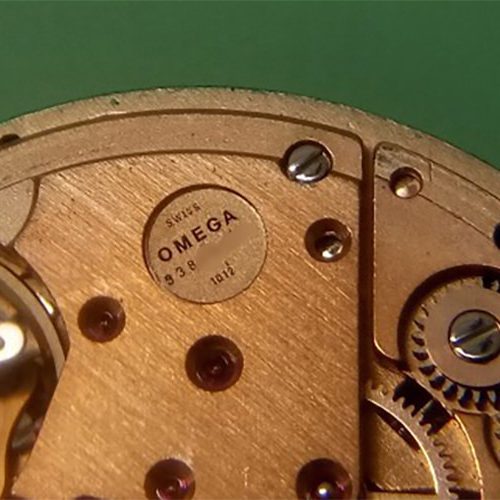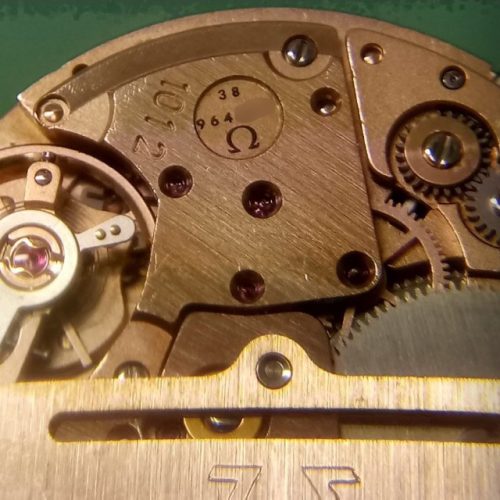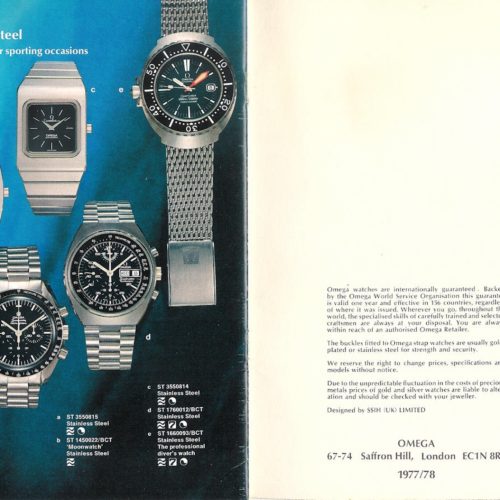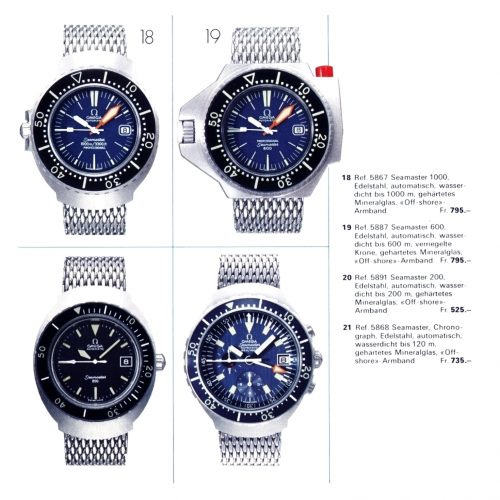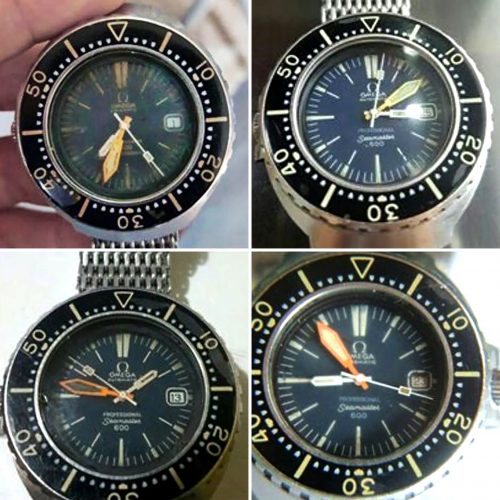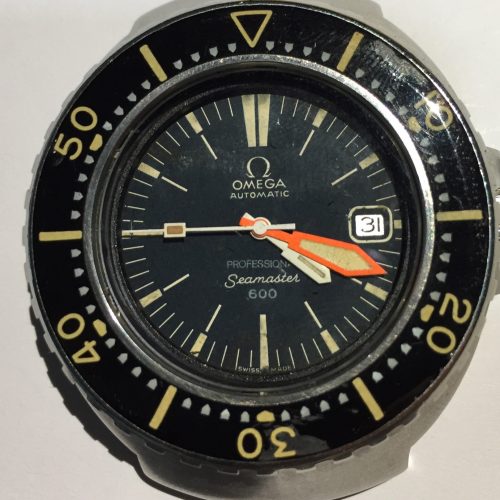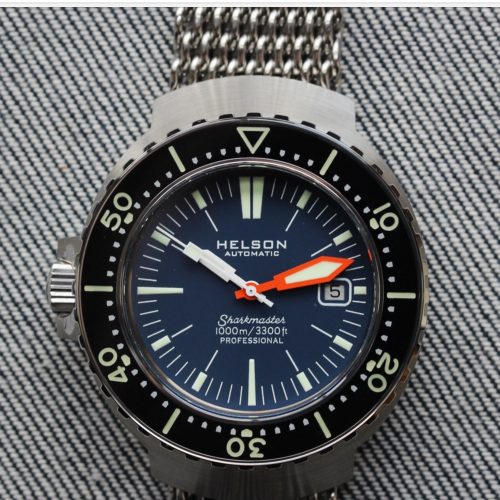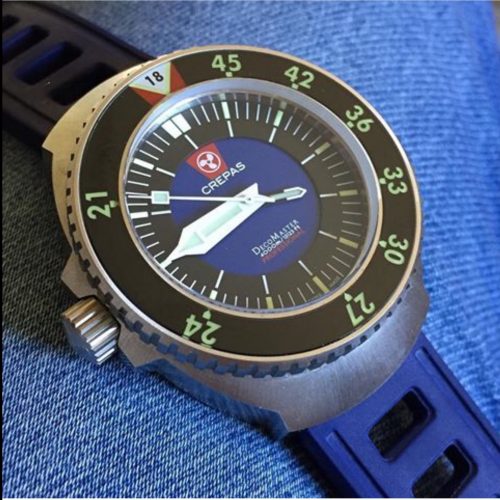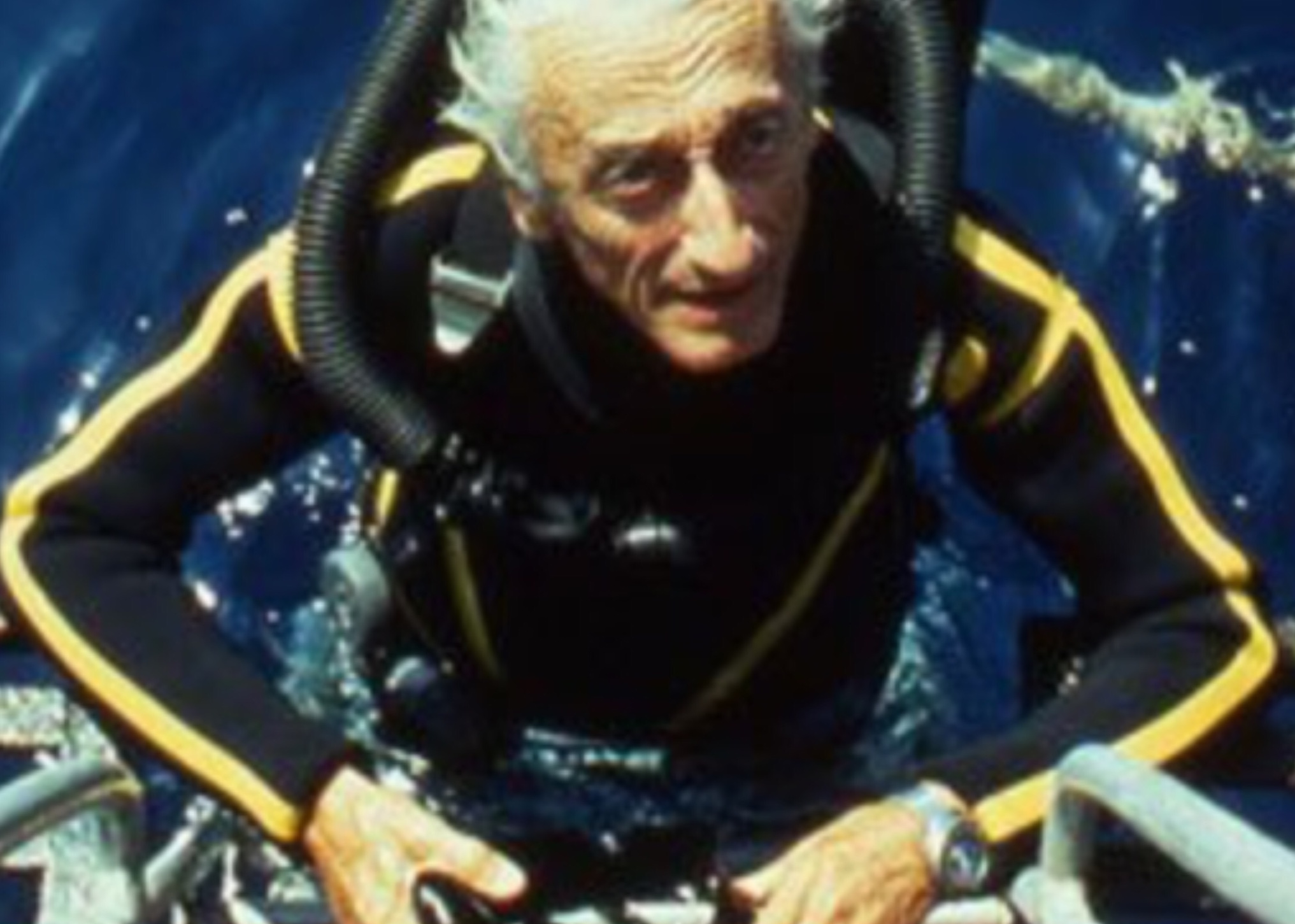Prototypes
During the early years of working with COMEX, innovation in saturation diving gave rise to the requirement to produce a more waterproof deep sea watch than the existing Seamaster 300. So the engineers at Omega merged a monocoque front-loaded case with the newly developed 1000 calibre series, giving birth to the Seamster 1000.
Omega was at the forefront of early years of research and development of deep-sea watches and saturation diving and were the exclusive supplier of COMEX up until 1971.
The 1000 metre watch had a simple rotary time-lapse bezel and the engineers designed a watch that was so waterproof and air-tight it would not require a helium release valve.
The new prototype showed more similarity to the existing house style by using the famous pilot-line style case as exemplified in the cosmic 2000 range (see cases below).
In addition, it used the slimline 1002-1012 automatic movement with the high-visibility minute hand plongeur set and a new innovative one-way rotary time-elapse bezel.
The 1000 has a 0.5cm thick crystal and it was repeatedly “top to bottom” tested (Omega used barometric chambers and subjected the watches to pressure cycling equivalent to taking the watch to the “top of Everest and to the bottom of the ocean”). Independent evaluations of the watch pronounced it more water-tight than a submarine and impervious to the helium ingress problem.
The Seamaster 1000 was tested alongside the Seamaster 600 and was attached to the International Underwater Contractors submarine “Beaver Mark IV” to measure the effects on the crystal at a depth of 1000 meters and more.
Further testing was carried out by Richard Winchester at Intersub at depths to 1000m. His prototype watch 101 can be seen in the photo on the left and a close up below.
A prototype of the Seamaster 1000 using the 552 calibre Seamaster 300 movement, which was produced in 1967-68 and was delivered to COMEX in mid 68 to be used in on-shore saturation diving tests and to be used in Hydra 1.
This watch was the precursor of the Seamaster 600 not the other way around.
The bezel numbers are taken from the US Navy decompression table.
Note the small centre seconds hand which is there to show the watch is working and the enlarged high-visibility minute hand. This was an incredibly successful watch very well received by all the divers and by COMEX.
First registered design of the watch; post-production but prior to retail sale.
1974 prototype series 3-1xx
Movement number 33110xxx showing the right-hand configuration, type 1 bezel but using the Seamaster 600 type 3 dial.
1975 Prototype series 5-0xx, 5-1xx and 5-2xx
-
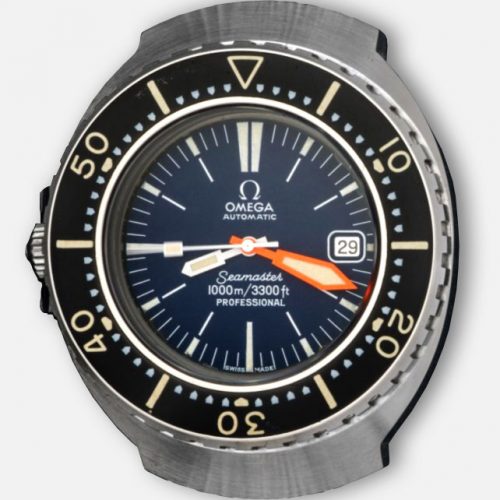
-
5-096, 1012, 166.093, August 1975
The prototype 5 added for the first time the redesigned Beyeler dial, which reflected the new position of the watch in the Omega hierarchy and its new depth.
-
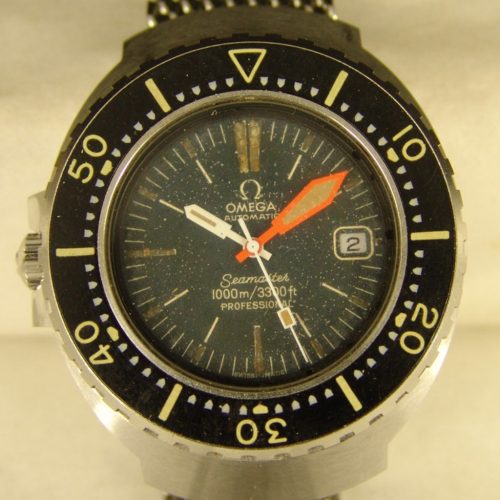
-
5-101 front
-
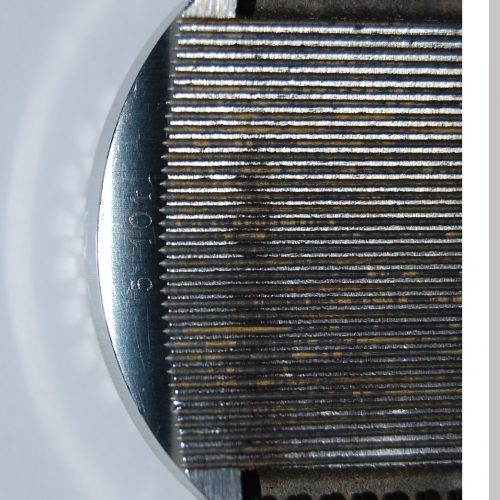
This is the legendary prototype tested by Intersub on behalf of Omega at 1000m on the outside of a submarine piloted by Captain Dick Winchester in 1975.
-
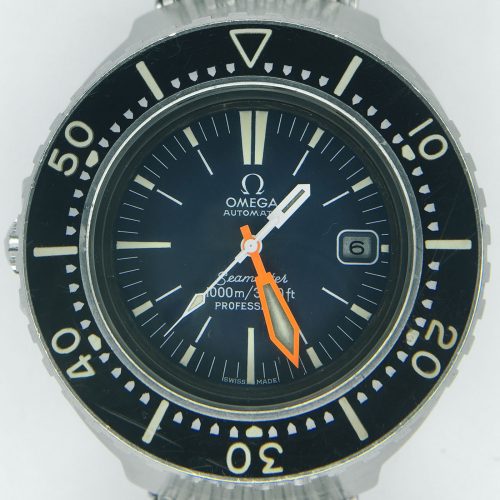
-
5-142 test handset
-
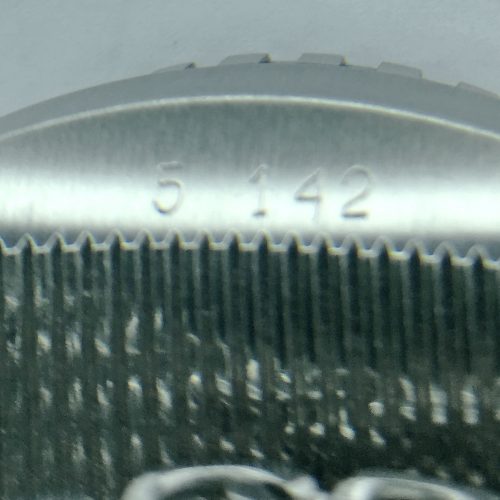
-
5-142 back
This watch carries a pre-production prototype dial is using a spear second hand and has a special chronometer-rated 1011 movement, issued prior to the 1012. This watch was used to calibrate temperature/time variations to determine the effect of sub-zero/icy conditions on the time-keeping accuracy of the watch.
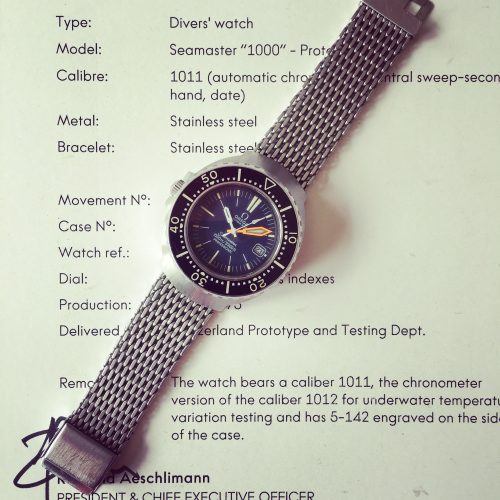
5-142
-
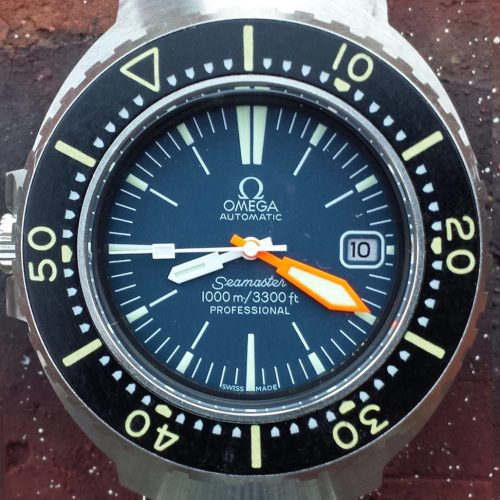
-
5-183 front
-
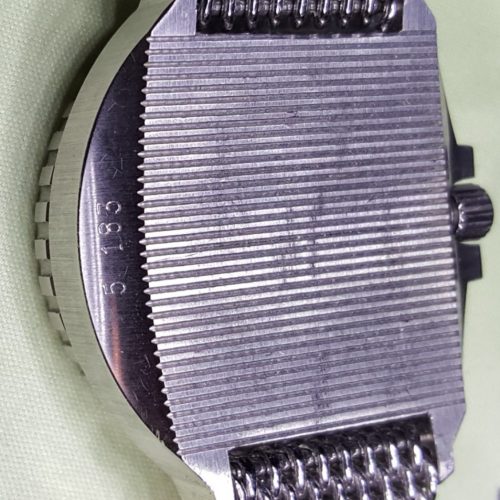
Prototype watch used by Nasa flight surgeon Dr Edward Beckman whilst researching the effect of deep-sea pressure on the human anatomy in Sealab 1, 2 and 3. Unfortunately the dial has been changed (see the original at Dials).
-
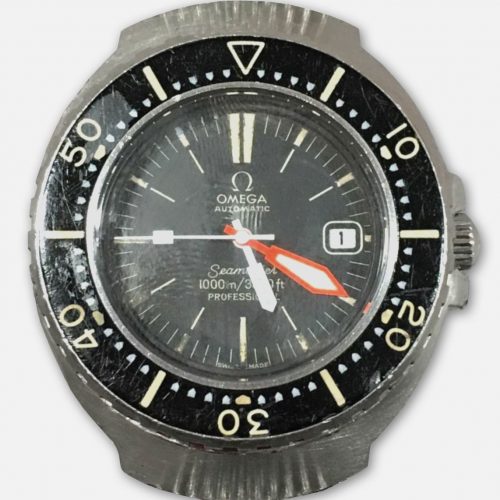
-
5-216 right hand crown
-
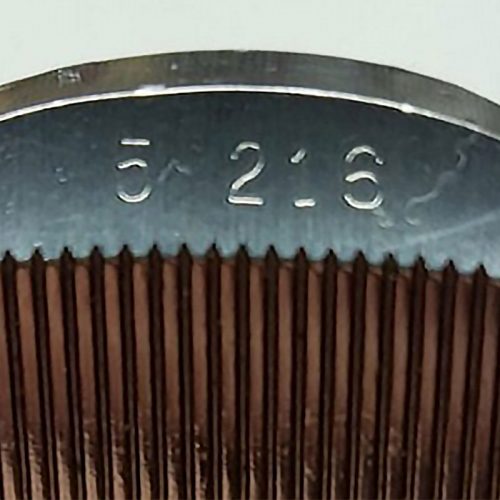
-
5-216 back
Correct dial, correct bezel, serviced hands, built with a right-hand crown issued on or around 1975.
Prototypes with even numbers 2 and 4 were allocated to the Seamaster 600, whereas odd numbers were allocated to the Seamaster 1000.
It is most likely that entire prototype population was in the order of a maximum of 100.
The Grand was no longer sold after 1982 but Omega undertook the development of an electronic version.
1982 Electronic Prototype Series
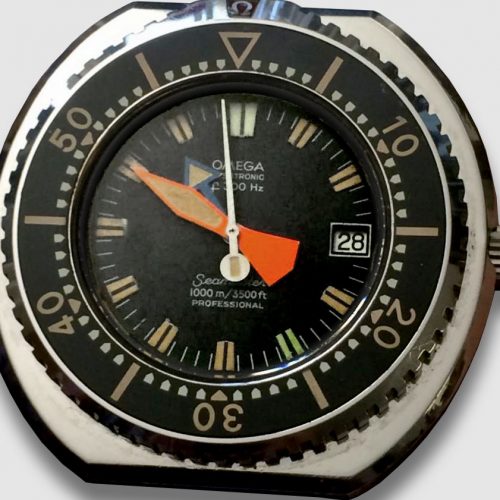
F300, based on the 1250 calibre Mosaba (movement sans balance) Chrono most likely the 1972 1260 calibre in this model
This utilised the bulova-licenced tuning fork technology and is technically identical to other F300s in the Omega range, however, it utilised a heavier case, new plongeur handset and The Grand rotary time-elapse bezel.
The reason for its rejection was never clear but it’s suspected that cold water gave rise to high battery consumption and the requirement for regular battery changes probably didn’t sit well with professional underwater divers.
A very advanced innovation using the new megaquartz 1510 base movement, however, the megaquartzes were not thermo-compensated and in a cold water environment, they could lose significant amounts of time. In addition battery life was also a problem.
Seamaster 1000 T1 Prototype Titanium (1982) based on the 1110 calibre, most probably the later version, possibly the 1111. Reputedly made subject to a tryout for the French Navy but rejected due to expense.

